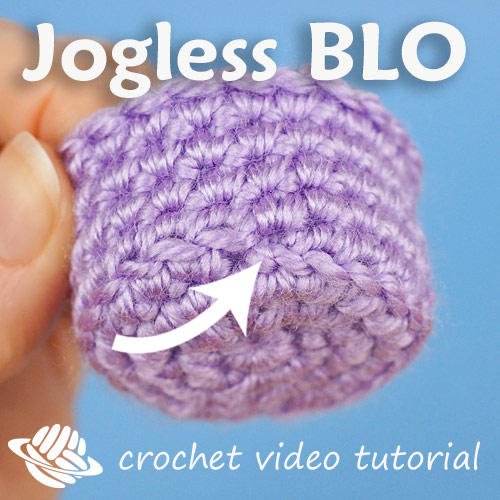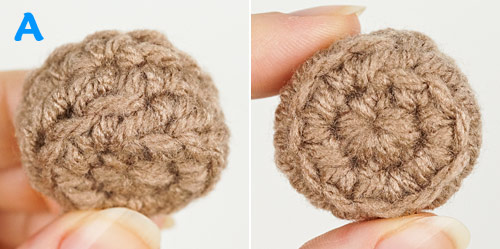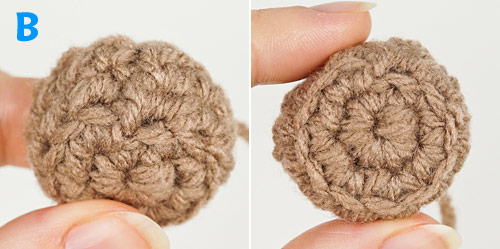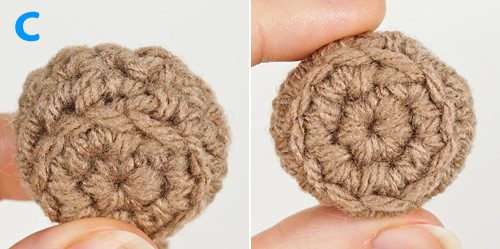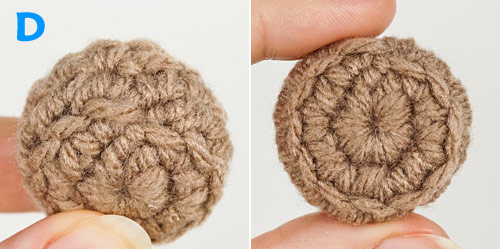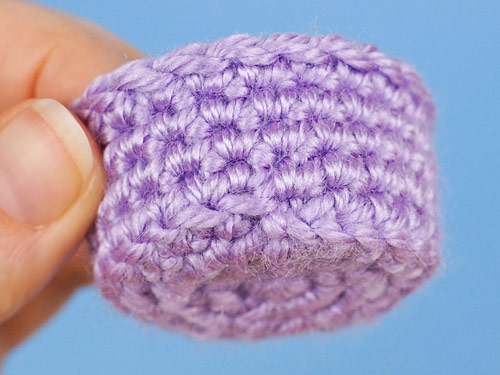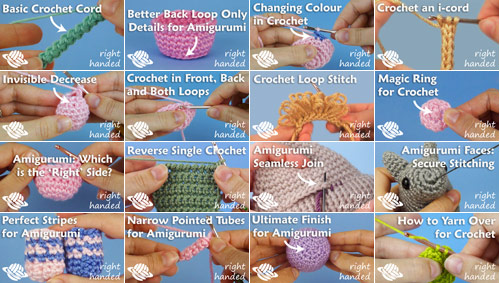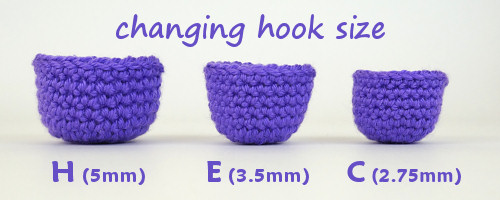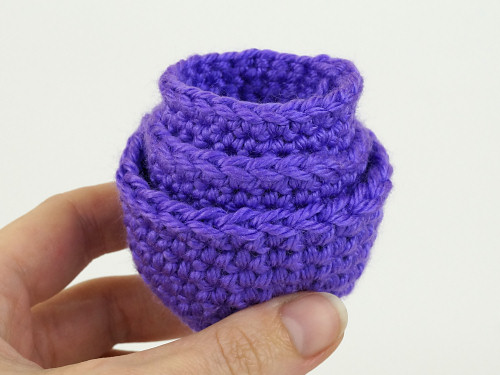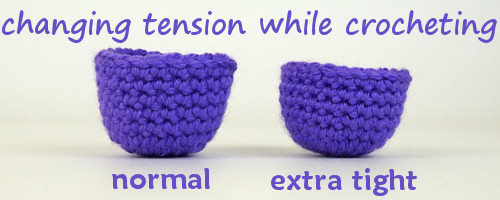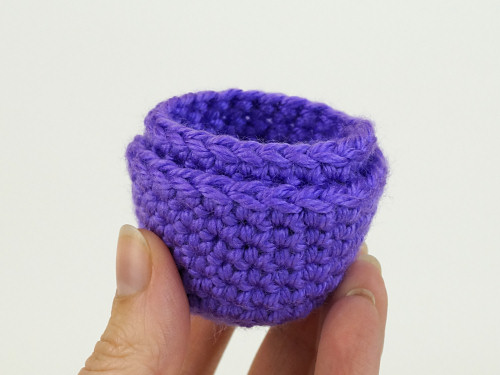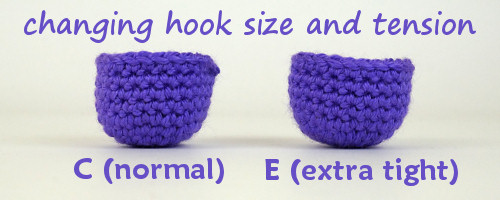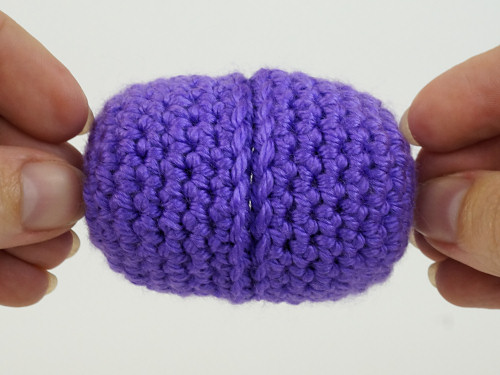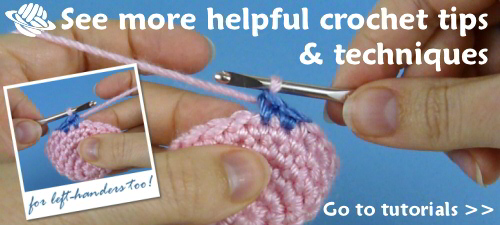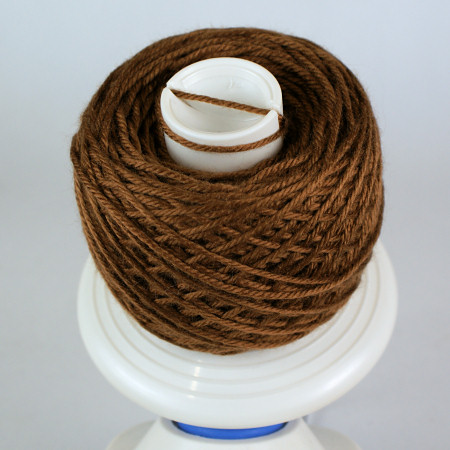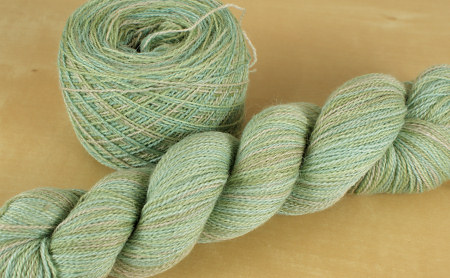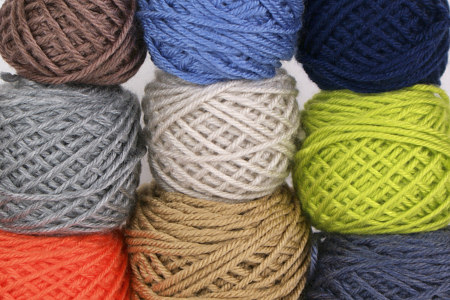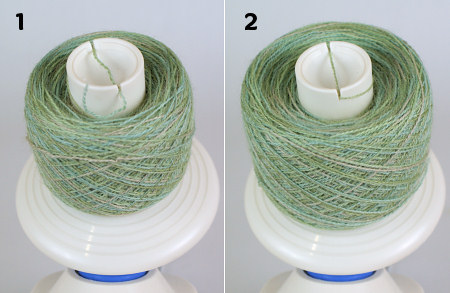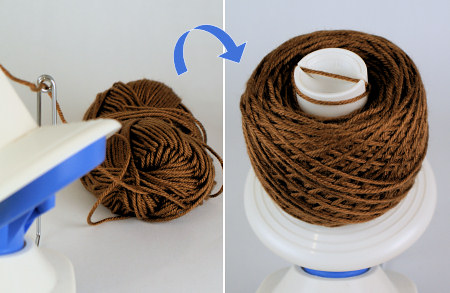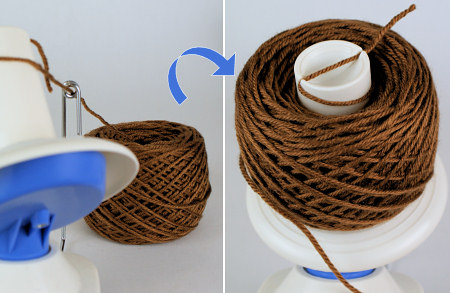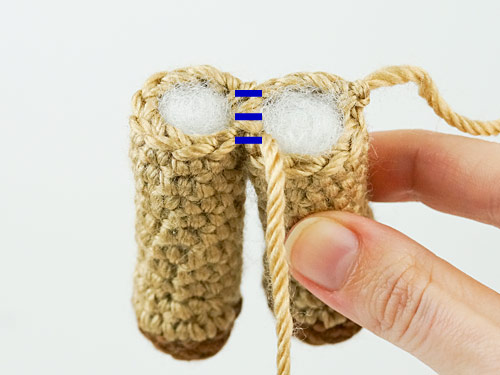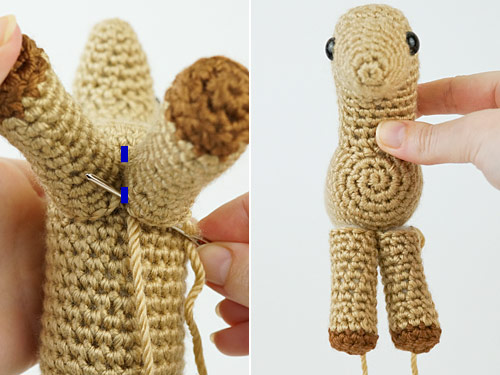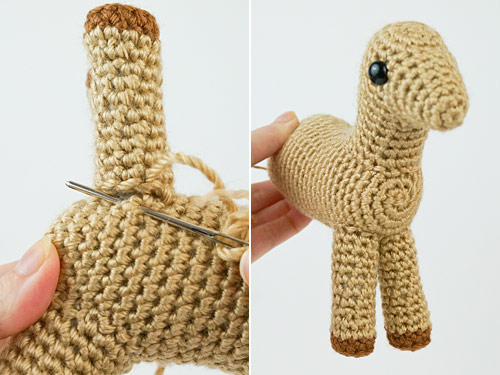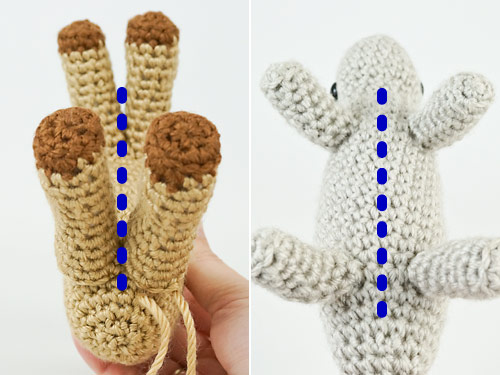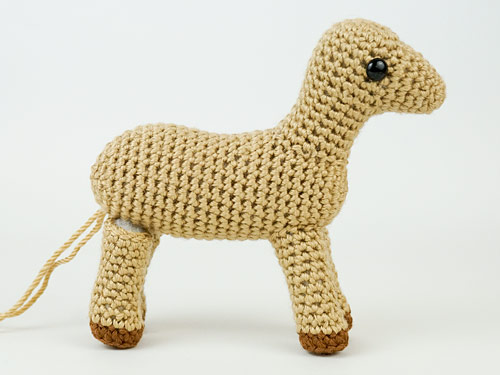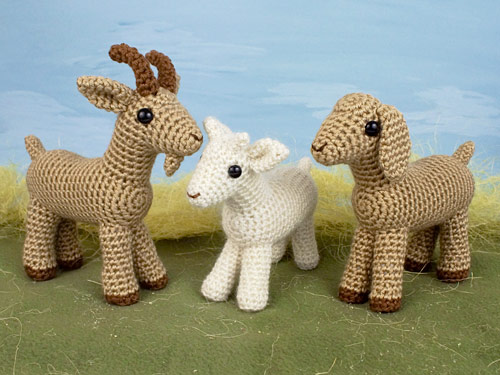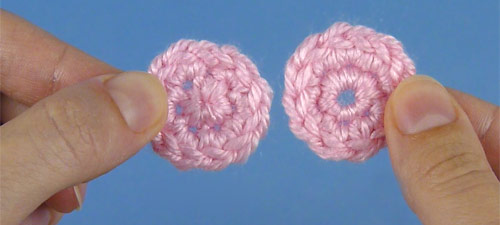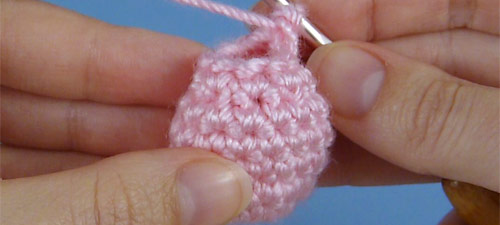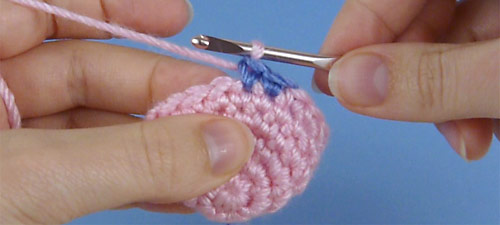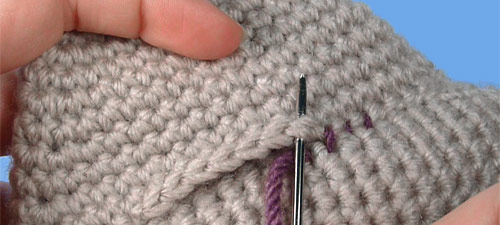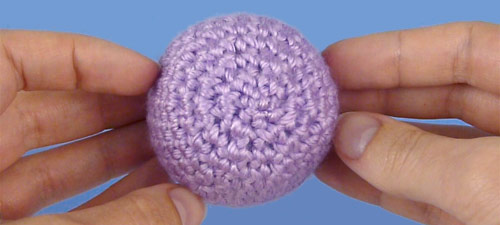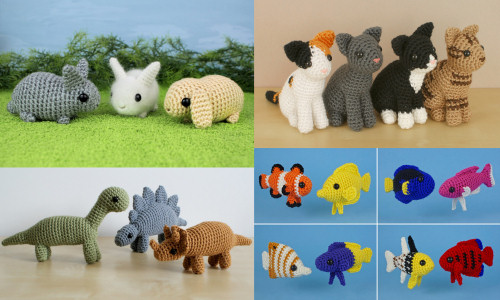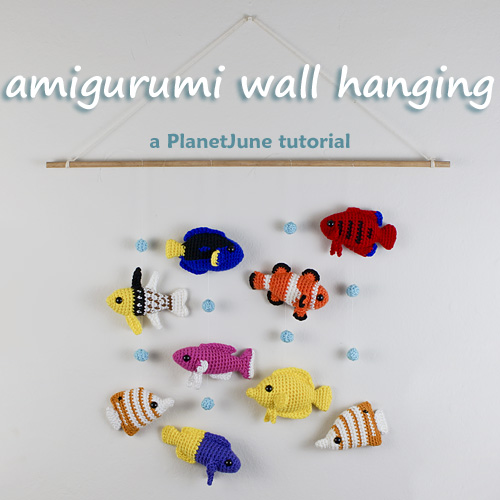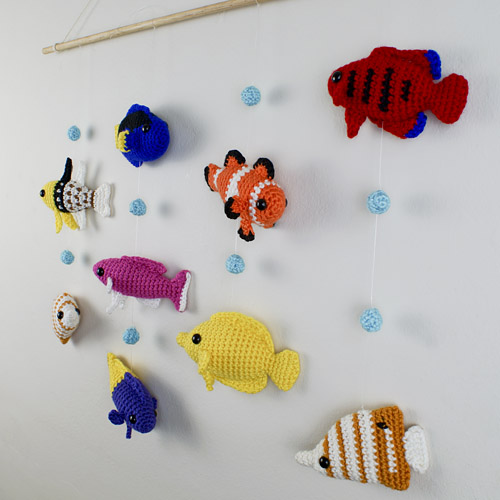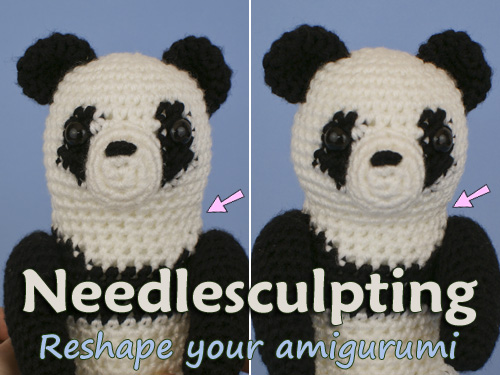Crochet Investigation: Avoiding the Jog in a BLO Round
Spoiler alert: in doing this jog-minimising back loop only round amigurumi experiment, I have a recommendation for a simple modification to make to your amigurumi that will minimise the jog with those back loop only rounds! If you’re not interested in my experiments, jump straight to the Jogless Back Loop Only Round for Amigurumi video tutorial 🙂
Crocheting a round of back loop only (BLO) stitches is a standard method for creating a sharp corner in amigurumi. The biggest problem is that, when you work in a continuous spiral, you end up with a noticeable jog between the first and last unworked loops of the round.
I’ve had several requests to develop a method for minimising that jog, so you know what that means: it’s time for another PlanetJune crochet investigation!
Method
For this experiment, I tested a few candidates that I thought may improve the look of that jog. Modifying one or other of my Perfect Stripes methods seemed like a promising idea, as well as changing the height of the end stitches to bring them closer together.
I crocheted the same small sample for each method so we can compare the effectiveness of each one. Each sample was crocheted in a spiral with a flat circular base, a round of BLO stitches to turn the corner, and then a few more rounds worked straight.
So, here are the candidates:
A. The control sample, as described above, with no attempt to minimise the jog
B. Sample using the No-Cut Join technique for the round before the BLO round and the BLO round
C. Sample using the Invisible Join technique for the round before the BLO round and the BLO round
D. Sample modifying the height of the stitch before the BLO round with a slip stitch
The photos below show each sample from two angles, and, if you’d like to play along, you can compare the appearance of the line of unworked loops around the edge of each sample and see what you think of my ‘improvements’…
Results
I compared each candidate with the control sample (A) to see how much it improved the appearance of the jog, judging on two criteria:
- How continuous the line of unworked loops appears between the first and last stitch of the round (left photo)
- How circular the entire round of unworked loops appears (right photo) – note that this effect is more noticeable because the samples are quite small; it wouldn’t be as obvious for a larger piece such as the base of an ami plant pot
Here are my observations:
B. The No-Cut Join gives the worst result of all the test pieces. Although the jog is reduced, extra mess is introduced to the surrounding stitches, and I think the overall effect is actually worse than doing nothing.
C. The Invisible Join gives a flawless result – the join is completely invisible and the round of unworked loops is almost completely circular. However, it’s slow, and leaves a lot of extra yarn ends, so it’s quite an investment in time and effort.
D. The height modifying method is very quick and simple to execute and gives a pretty good result. As the spiral is almost uninterrupted, the unworked loops don’t quite form a perfect circle, but the jog is almost invisible.
My Recommendations
If you want the best-looking back loop only round possible and don’t care how long it takes, switching to joined rounds (for both the round before the BLO round and the BLO round) and using the Invisible Join method from my Perfect Stripes tutorial will give you the most perfect result.
But, my recommendation is: for the best balance of a good result with a quick and easy method, use my height modifying method – now called my Jogless Back Loop Only Round method – for minimising the jog. (And, to give an even better result, combine it with my Better BLO technique – between the two, you’ll end up with a very neat and practically jogless back loop only round, as you can see below.)
Impressed? Now learn how to do it, with my new video tutorial:
Continue to A Jogless Back Loop Only Round for Amigurumi video tutorial >>

